UPSC Daily Current Affairs: 2nd March 2025 | Current Affairs & Hindu Analysis: Daily, Weekly & Monthly PDF Download
GS3/Defence & Security
What is the Meteor Missile?
 Why in News?
Why in News?
A recent advancement in air-to-air combat capabilities was demonstrated when a US Marine Corps (USMC) F-35B Lightning II conducted its inaugural test missions with the Meteor air-to-air missile.
- The Meteor missile is a radar-guided, beyond-visual-range air-to-air missile (BVRAAM).
- It was developed by a consortium of European partners led by MBDA for six European nations: the UK, Germany, Italy, France, Spain, and Sweden.
Additional Details
- Specifications: The Meteor missile measures 3.65 meters in length and has a diameter of 0.178 meters.
- Engine Type: Unlike most conventional solid-fuel missiles, it features a ramjet engine, enabling controlled flight speeds, complex maneuvers, and a range exceeding 100 kilometers.
- Speed Capability: Designed to exceed speeds of Mach 4, the missile possesses a significant no-escape zone.
- Guidance System: The missile is equipped with an advanced active radar seeker, providing all-weather capabilities to engage various targets, including agile fast jets, small UAVs, and cruise missiles.
- Data Link: It incorporates a two-way datalink, allowing the launch platform to send updates on targets or to re-target the missile during flight. This datalink transmits crucial information such as kinematic status and target acquisition notifications.
- Warhead: The Meteor is armed with a blast-fragmentation warhead, enhancing its lethality against diverse target types.
The introduction of the Meteor missile into operational use marks a significant enhancement in aerial combat capabilities, reflecting advancements in missile technology and strategic defense measures.
GS1/Indian Society
Banjara Community
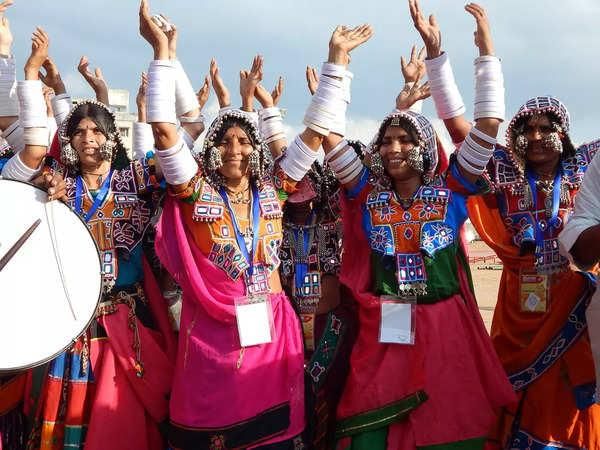 Why in News?
Why in News?
The Lok Sabha Speaker recently addressed the members of the Banjara community during the celebration of the 286th birth anniversary of Sant Sewalal Maharaja at the Dr Ambedkar International Centre in New Delhi.
- The Banjara community comprises various groups primarily found in Telangana, Andhra Pradesh, and Karnataka.
- Most members have transitioned from a nomadic lifestyle to permanent settlements known as Tandas.
Additional Details
- Language: The Banjara people predominantly speak Gor Boli, also known as Lambadi, which belongs to the Indo-Aryan group of languages. Notably, Lambadi does not have a written script.
- The majority of the Banjara community practices Hinduism, often blending traditional Hindu beliefs with their own animistic practices.
- Cultural Practices: The community celebrates the festival of Teej during the month of Shravan (August), where young unmarried girls pray for a suitable groom. Traditional dance forms, such as the Fire dance and Chari, are integral to their culture.
- Tattoos play a significant role in the identity and personal style of the Banjara people, serving as expressions of individuality and family connections.
In summary, the Banjara community is rich in cultural heritage and has made significant contributions to society while also playing a crucial role in preserving nature and traditions.
GS2/Polity
UGC’s New Draft Rules Limit ‘Caste-Based Discrimination’ to SC/ST Communities
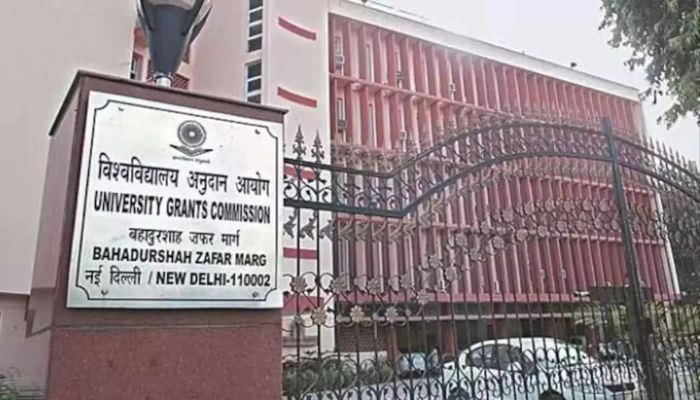 Why in News?
Why in News?
The Union government has informed the Supreme Court about new UGC regulations that will empower it to de-recognize higher education institutions that fail to prevent discrimination, particularly based on religion or caste.
- The new draft regulations aim to tackle systemic caste-based discrimination in Indian universities.
- Discrimination often leads to academic challenges and mental distress for marginalized students.
- Legal frameworks exist to address caste discrimination, but compliance remains low.
Additional Details
- Caste-Based Discrimination:Refers to the systemic exclusion, harassment, and bias faced by students from Scheduled Castes (SC), Scheduled Tribes (ST), and Other Backward Classes (OBCs). This can manifest in forms such as:
- Unfair academic grading
- Social ostracization
- Denial of opportunities
- Psychological harassment
- Statistics: A 2021 study showed that 70% of Dalit and Adivasi students in IITs experienced caste discrimination, impacting their educational experience and opportunities.
- High dropout rates and mental health issues have been reported among marginalized students, with notable cases like Rohith Vemula and Payal Tadvi highlighting the severity of the issue.
- Legal Mechanism: The Scheduled Castes and Scheduled Tribes (Prevention of Atrocities) Act, 1989 provides legal protection against caste-based violence, and the UGC mandates the establishment of anti-discrimination cells in universities.
- Challenges: Many institutions lack adequate faculty representation from SC, ST, and OBC communities, contributing to student alienation. Over 40% of universities have not complied with data requests from the UGC regarding Equal Opportunity Cells.
- Way Forward: The UGC should consider criminalizing caste discrimination and enhancing institutional support through grievance redressal mechanisms and diversity training.
The proposed UGC (Promotion of Equity in Higher Education Institutions) Regulations, 2025, aim to strengthen the authority of the UGC to combat caste and religion-based discrimination, ensuring a more equitable educational environment.
GS3/Environment
Lankamalleswara Wildlife Sanctuary
Why in News?
The Archaeological Survey of India recently conducted an epigraphical survey in the Sri Lankamalleswara Wildlife Sanctuary located in the Kadapa district of Andhra Pradesh. This survey revealed significant findings, including three rock shelters, rock paintings, and 30 inscriptions that highlight the historical importance of the area.
- The sanctuary is situated in the Kadapa district of Andhra Pradesh.
- It serves as a catchment area for the Pennar River.
- Notable vegetation types include Southern tropical dry deciduous forests and tropical thorn forests.
- The sanctuary is home to endangered species such as the Jerdon's courser.
Additional Details
- Rivers: The sanctuary plays a critical role in the hydrology of the region, forming the catchment for the Pennar River. Additionally, the Telugu Ganga canal flows into the eastern flank, draining into the Pennar River.
- Vegetation:The sanctuary exhibits diverse flora, including:
- Southern tropical dry deciduous forest
- Scrub forest in the plains
- Southern dry mixed deciduous forest
- Tropical thorn forests
- Tropical dry evergreen forest
- Flora: The area is known for its rare and endangered plants, such as Red sanders and Sandalwood. The riparian vegetation contributes significantly to the region's biodiversity, including species like Terminalia spp., Syzygium spp. (Jamun), Wild mangoes, Anogeissus latifolia, Phoenix spp., Bamboo, and Hardwickia binata.
- Fauna: The sanctuary is home to various species, including the Common toad, Bull frog, Common Indian skink, and Green vine snake. It is particularly noted as the sole habitat for the rare and endangered Jerdon's courser.
The recent findings in the Lankamalleswara Wildlife Sanctuary not only underscore its ecological significance but also highlight its rich cultural heritage, providing insights into the historical context of the region.
GS2/Polity
Challenges Faced by Elected Women Representatives in Panchayati Raj System
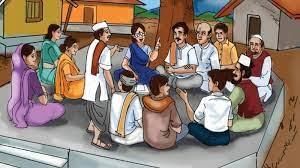 Why in News?
Why in News?
A recent report by the Ministry of Panchayati Raj panel, led by former Mines Secretary Sushil Kumar, has brought to light several challenges that hinder Elected Women Representatives (EWRs) from exercising their authority independently. These obstacles encompass socio-cultural norms, patriarchal biases, a lack of deterrent laws, and insufficient political experience.
- The report calls for policy interventions, structural reforms, and strict penalties to combat the influence of male relatives acting as proxies.
- It highlights the urgent need for empowering EWRs to ensure their roles in local governance are recognized and upheld.
Additional Details
- Background: The committee was established in September 2023 following a Supreme Court order issued on July 6, 2023. It conducted four regional workshops involving representatives from 14 states, including Madhya Pradesh, Tripura, Arunachal Pradesh, Himachal Pradesh, Jharkhand, Rajasthan, Uttar Pradesh, Andhra Pradesh, Karnataka, and Kerala. The findings are derived from discussions with state governments, EWRs, and local stakeholders.
- Key Challenges Identified:
- Lack of political experience: Newly elected women often lack the necessary exposure and experience, making it difficult for them to fulfill their responsibilities effectively, particularly at the Gram Panchayat level.
- Gender-based discrimination: Women representatives frequently face exclusion in both official and informal meetings, as male representatives and officials tend to favor engaging with their male counterparts, which reinforces male dominance and confines women's leadership roles.
- Patriarchal socio-cultural norms: Traditional gender roles and restrictive practices, such as purdah, discourage women from participating in male-dominated gatherings, including panchayat meetings, limiting their governance involvement.
- Political pressure and threats: Women representatives are often subjected to coercion, threats, and violence from political rivals and dominant groups, with the misuse of ‘No Confidence Motion’ as a tactic to force them out of office.
- Socio-economic and cultural disadvantages: Many EWRs hail from marginalized communities (SC/ST/Minorities/Disabled), increasing their vulnerabilities. Balancing domestic and political responsibilities hampers their effectiveness, and societal norms lead to hesitance in making independent financial decisions.
- Lack of training and mentorship: There is limited access to training programs that could enhance leadership skills, and the absence of mentorship restricts their ability to navigate political challenges.
- Rotational reservation system: The five-year term limit for reserved seats is too short for women to gain sufficient experience and establish themselves as leaders, disrupting governance continuity and weakening women's political impact.
- Weak legal deterrence: Current legal measures to penalize male relatives acting as proxies are inadequate, allowing them to maintain control over decision-making and undermining the authority of EWRs.
- Recommendations and Way Forward:
- Policy interventions: Strengthening training programs and providing legal awareness to EWRs is essential.
- Structural reforms: Extending the duration of reservation for women can ensure continuity in leadership.
- Exemplary penalties: Enforcing strict laws against male relatives acting as proxies is crucial.
- Capacity building: Enhancing mentorship and skill development initiatives will benefit women leaders.
- Awareness campaigns: Promoting gender sensitization at all governance levels is necessary.
The report emphasizes the critical need to address the systemic challenges that obstruct women's active participation in local governance. By implementing the proposed reforms, the government can empower EWRs, ensuring their constitutional rights and leadership roles in the Panchayati Raj system are upheld.
GS3/Environment
Pandoh Dam
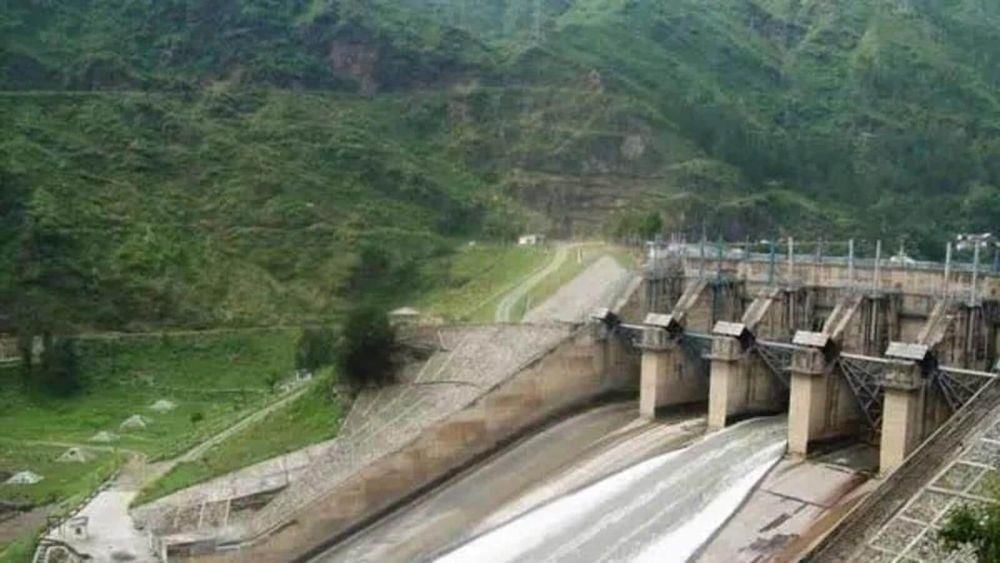 Why in News?
Why in News?
Due to the ongoing heavy rainfall and snowfall in the higher regions of Himachal Pradesh, the Bhakra Beas Management Board (BBMB) has recently opened the spillway gates of the Pandoh Dam as a precautionary measure to manage water levels.
- The Pandoh Dam is an embankment dam located in the Mandi district of Himachal Pradesh.
- It was constructed on the Beas River primarily for hydroelectric power generation.
- The dam, a concrete gravity structure, stands 76 meters (249 feet) tall and was commissioned in 1977.
- Pandoh Dam is situated approximately 10 km from Manali and is part of a run-of-the-river power design.
Additional Details
- Water Diversion: The dam diverts water from the Beas River to the southwest through a channel of tunnels that spans 38 km.
- Power Generation: Before being discharged into the Sutlej River, the dam's water is utilized for power generation at the Dehar Power House, which has a capacity of 990 MW.
- The dam has also led to the formation of the Pandoh Lake, a popular tourist destination located 19 km upstream from the town of Mandi.
- Pandoh Dam is managed by the Bhakra Beas Management Board, and National Highway 21 (NH 21) passes over the dam.
This dam plays a crucial role in both hydroelectric power generation and tourism in the region, highlighting its significance in local infrastructure and economy.
GS3/Environment
Green Sea Turtle
 Why in News?
Why in News?
A green sea turtle carcass recently washed ashore on Marina beach in Chennai, highlighting the significance of this species and its environmental status.
- The green sea turtle is the largest hard-shelled sea turtle.
- Its scientific name is Chelonia mydas.
- Green sea turtles are unique among sea turtles as they are primarily herbivores.
- They are distributed mainly in tropical and subtropical waters across the globe.
- Estimated lifespan ranges from 60 to 70 years.
- Current conservation status is listed as endangered on the IUCN Red List.
Additional Details
- Diet: Green sea turtles primarily consume seagrasses and algae, which is responsible for the greenish hue of their fat rather than their shells.
- Distribution: These turtles inhabit tropical and subtropical waters and nest along the coastlines of over 80 countries, with the largest populations found in Costa Rica and Australia.
- Migration: Green sea turtles are known to migrate long distances, sometimes exceeding 1,615 miles (2,600 kilometers), between their feeding and nesting sites.
- Physical Characteristics: They can grow up to 120 cm in length and weigh between 136 to 159 kg. Their carapace can vary in shape and color, ranging from black and grey to green and yellow.
- Adaptations: Their streamlined bodies and large flippers make them well-suited for life in the ocean. They lack teeth but possess modified beaks for their herbivorous diet.
- Senses: Green sea turtles have good underwater vision but are nearsighted out of water. They also have excellent hearing at low frequencies and a strong sense of smell.
The green sea turtle plays a crucial role in marine ecosystems, and its conservation is essential for maintaining the health of ocean environments.
GS3/Environment
Bhagwan Mahavir Wildlife Sanctuary
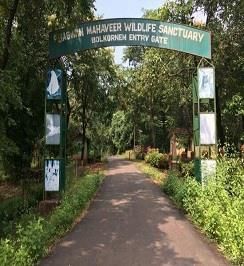 Why in News?
Why in News?
The recent issuance of notices by the high court to the South Western Railway and the Directorate of Survey and Land Records (DSLR) is in response to a Public Interest Litigation (PIL) that challenges the land acquisition processes occurring within the Bhagwan Mahavir Wildlife Sanctuary.
- Location: Nestled in the Western Ghats, near Mollem village in Goa.
- Established: Initially designated as the Mollem Game Sanctuary in 1969, it was later renamed.
- Area: Encompasses approximately 240 square kilometers.
- Significant Attractions: Home to Dudhsagar waterfall, Devil’s Canyon, and Tambdi Surla temple.
Additional Details
- Vegetation: The sanctuary features diverse ecosystems including West Coast tropical evergreen forests, semi-evergreen forests, and moist deciduous forests.
- Flora: Dominant species include Teak, bamboo, cashew, and eucalyptus trees.
- Fauna: Hosts various wildlife such as Gaur, Sambar, Leopards, Spotted Deer, and several species of snakes including Pythons and Cobras.
The Bhagwan Mahavir Wildlife Sanctuary plays a crucial role in preserving the biodiversity of the region while also being a significant site for tourism and environmental education.
GS2/Polity
Contentious Amendments to the Advocates Act and Their Implications
Why in News?
On February 22, 2025, the Centre withdrew the contentious Advocates (Amendment) Bill, 2025, in response to strong opposition from the legal community, indicating that a revised version reflecting public feedback would be introduced.
- The Advocates (Amendment) Bill aimed to amend the Advocates Act, 1961, which regulates the legal profession in India.
- Concerns were raised regarding the potential erosion of the independence of legal institutions and excessive government control.
- The Bill faced significant backlash leading to nationwide strikes and representations from lawyers and the Bar Council of India (BCI).
Additional Details
- Government Influence Over the Bar Council of India (BCI): The Bill proposed that the central government could nominate up to three members to the BCI, which is currently an independent body. Critics argued this would compromise the council's autonomy and invite political interference in legal matters.
- Restrictions on Lawyers' Right to Protest: A controversial provision in Section 35A aimed to ban strikes and boycotts by lawyers, labeling any form of protest as misconduct. Lawyers opposed this, asserting that the right to protest is fundamental in a democracy.
- Entry of Foreign Law Firms and Lawyers: The Bill sought to give the government authority to regulate the entry of foreign law firms and lawyers into India, raising concerns about its impact on Indian legal professionals.
- Expanded Definition of 'Legal Practitioner': The proposed broadened definition included corporate lawyers and those linked to foreign law firms, which the BCI argued would dilute professional standards.
- New Misconduct Provisions and Penalties: The Bill introduced provisions allowing clients to file misconduct complaints against lawyers. It also included financial penalties for lawyers found guilty of misconduct, which raised concerns among legal professionals about fairness.
The withdrawal of the Advocates (Amendment) Bill underscores the importance of maintaining the independence of the legal profession. Although legal reforms are essential, they need to be developed in consultation with legal stakeholders to ensure that they strengthen rather than undermine the judiciary. The government's decision to reconsider the Bill reflects an acknowledgment of these critical concerns. Future discussions should aim for a balanced approach that upholds legal ethics while promoting judicial efficiency.
GS3/Environment
Geological Survey of India Celebrates 175 Years
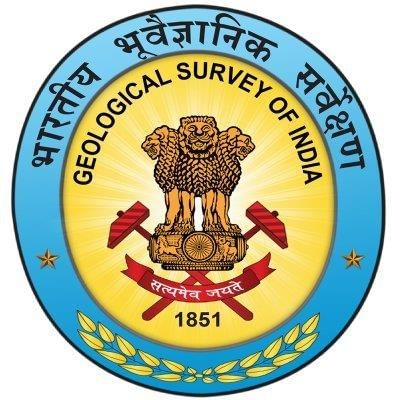 Why in News?
Why in News?
The Geological Survey of India (GSI), one of the nation's oldest scientific organizations, is poised to commemorate its 175th year, marking a significant milestone in its geoscientific legacy.
- The GSI was established in 1851 by Sir Thomas Oldham to locate coal deposits for the Railways.
- It has evolved into a key repository of geological information for various fields in India.
- The organization provides unbiased, current geological expertise and information for policy-making and socio-economic needs.
- Headquartered in Kolkata, GSI operates six regional offices across India.
Additional Details
- Role of GSI: GSI focuses on systematic documentation of geological processes, both on the surface and subsurface, throughout India and its offshore areas.
- The organization conducts geological, geophysical, and geochemical surveys using advanced, cost-effective methods.
- It plays a pivotal role in geological mapping, mineral exploration, disaster studies, and geoscientific research, contributing significantly to India's industrial and economic development.
- Headquarters: The GSI is based in Kolkata, with regional offices in Lucknow, Jaipur, Nagpur, Hyderabad, Shillong, and Kolkata, supported by state units in every state.
- Nodal Ministry: Currently, the GSI operates as an attached office under the Ministry of Mines.
In conclusion, the GSI's rich history and ongoing contributions underscore its vital role in advancing geoscientific knowledge and supporting national development efforts.
GS3/Environment
Reunion Island and Cyclone Garance
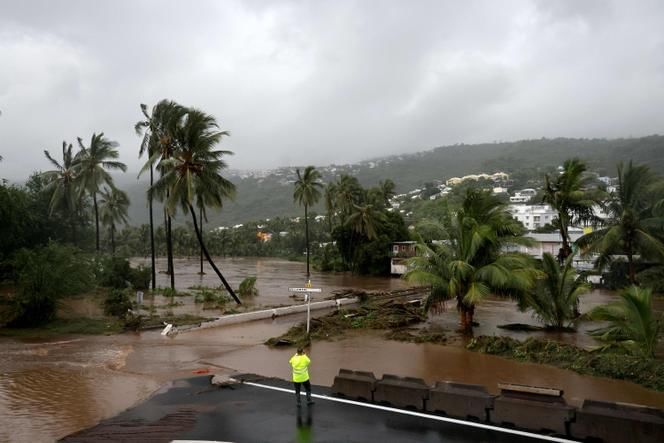 Why in News?
Why in News?
Recently, cyclone Garance has struck the French overseas territory of La Réunion, resulting in the tragic loss of at least four lives. This event has brought significant attention to the island's geographical and sociocultural context.
- La Réunion is a French island located in the Western Indian Ocean.
- The island is known for its volcanic origins and rugged mountainous terrain.
- The population is predominantly of mixed descent, stemming from various historical migrations.
- The island's economy is heavily reliant on the export of sugar and other agricultural products.
Additional Details
- Geography: Réunion Island is situated approximately 680 km east of Madagascar and 180 km southwest of Mauritius. It spans an area of 2,511 sq. km and features an entirely volcanic landscape.
- Natural Features: The island is home to the highest peak in the Indian Ocean, Piton des Neiges, and hosts one of the most active volcanoes globally, Piton de la Fournaise.
- Historical Context: The island was first settled in the 17th century by French colonists, with subsequent waves of migration bringing in slave labourers and indentured workers from various regions, including East Africa and Asia.
- Economy: The economy primarily revolves around the export of sugar, with other important products including meat, milk, rum, molasses, tobacco, geranium essence, and vanilla.
The impact of cyclone Garance highlights not only the vulnerability of Réunion Island to natural disasters but also the resilience of its communities and the importance of disaster preparedness in this unique geographical context.
|
44 videos|5359 docs|1133 tests
|
FAQs on UPSC Daily Current Affairs: 2nd March 2025 - Current Affairs & Hindu Analysis: Daily, Weekly & Monthly
| 1. What is the Meteor Missile and what are its key features? |  |
| 2. What role does the Banjara community play in Indian society? |  |
| 3. What are the implications of the UGC’s new draft rules limiting caste-based discrimination? |  |
| 4. What are the main features of Lankamalleswara Wildlife Sanctuary? |  |
| 5. What challenges do elected women representatives face in the Panchayati Raj system? |  |
















